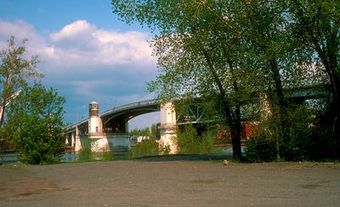Joliette
Joliette, Qué, City, pop 19 044 (2006c), 17 837 (2001c), inc 1863 and as a city in 1918. Joliette is located 60 km northeast of Montréal on the banks of the Rivière l'Assomption, close to the Laurentians and surrounded by a prosperous agricultural region.It was founded about 1824 by Barthélemy Joliette, seigneur de Lavaltrie, who wanted to become involved in the forestry industry. The lumber mill was one of the first buildings constructed. The town's economy diversified rapidly with the establishment of stone quarries and a foundry. Joliette himself sought to establish new businesses, including a distillery (1839) and a railway (1848-50).
After his death in 1850, diversification continued, and the town has always since had a varied manufacturing base, ranging from food products to ceramics, textiles, tires, building materials and specialized metal products. As of 1847, a classical college drew students to Joliette from surrounding areas. In 1858 the town became a seat of the district court, and toward the end of the century built a hospital. Establishment of the Joliette diocese in 1904 confirmed the town as a regional service centre.
Today, Joliette still plays a dual role as a small industrial and service centre, with several educational institutions, a CEGEP, a museum of art and government offices.

 Share on Facebook
Share on Facebook Share on X
Share on X Share by Email
Share by Email Share on Google Classroom
Share on Google Classroom

